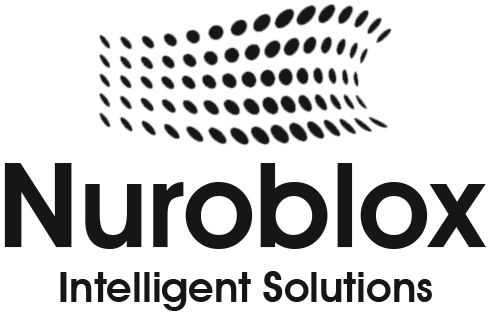10 Best AI Automation Tools You Should Be Using Right Now
AI automation tools are no longer optional, they’re essential for businesses looking to scale, innovate, and stay competitive in 2025. These tools streamline operations, reduce manual effort, and make intelligent decisions based on data. From managing workflows and automating customer support to predicting trends and processing documents, AI automation tools can radically transform business processes.
In this blog, we highlight the 10 best AI automation tools that are driving real impact across industries.
Benefits of Using AI Automation Tools
AI automation tools offer powerful advantages across industries and departments:
Increased Efficiency: Automate repetitive tasks and streamline workflows reducing time and effort spent on manual work.
Cost Reduction: Minimize human errors and operational overhead, leading to significant long-term cost savings.
Enhanced Accuracy: AI-driven bots follow logic consistently, ensuring high data accuracy and reliable outcomes.
Scalability: Easily scale operations by deploying more bots or AI agents without increasing your workforce.
Faster Decision-Making: Leverage machine learning to analyze large datasets and deliver real-time, data-backed decisions.
Improved Customer Experience: Enable faster response times, 24/7 support, and personalized engagement with AI-powered interfaces.
Better Use of Human Talent: Free up teams from mundane tasks so they can focus on innovation, strategy, and high-value activities.
Criteria for Selection

Choosing the right AI automation tools involves more than just picking what’s popular. Each organization has unique needs, processes, and tech stacks. To ensure this list delivers value across industries and use cases, we evaluated tools based on the following criteria:
1. AI Integration & Intelligence- We focused on tools that offer more than basic automation each must include some form of artificial intelligence (e.g., machine learning, NLP, or predictive analytics) to enable intelligent decision-making, learning, or adaptation.
2. Ease of Use & User Experience- Whether it’s a no-code platform for business users or a developer-friendly API, tools with intuitive interfaces and guided setup scored higher. Usability reduces implementation time and increases adoption.
3. Scalability- We considered how well each tool supports growing workloads, teams, and complexity. This includes multi-user access, workflow orchestration, and the ability to scale automation across departments.
4. Integration Capabilities- The best automation tools must integrate easily with third-party apps, CRMs, ERPs, databases, cloud platforms, and internal systems. Native connectors, APIs, and plug-ins are a big plus.
5. Customization & Flexibility- Whether it’s custom ML models or logic-based workflow design, tools that allow users to tailor automation to specific needs were prioritized.
6. Security & Compliance- Tools that offer enterprise-grade security, data encryption, audit logs, and compliance with standards (e.g., GDPR, HIPAA) were ranked higher especially for industries like finance, healthcare, and government.
7. Real-World Use Cases- We selected tools with proven implementations and success stories across industries. These tools demonstrate practical ROI in areas like customer service, document processing, finance, and IT.
8. Value for Money- While pricing varies, we looked at overall value features offered, support, updates, and licensing models. Tools with transparent pricing or strong free tiers were given preference.
As AI adoption matures, the automation landscape has evolved beyond rule-based bots. These 10 platforms are leading the charge in combining AI with automation to help organizations automate smarter, faster, and at scale.
10 Best AI Automation Tools in 2025
1. NuroBlox
Category: Unified AI + RPA Automation Platform
NuroBlox is an emerging automation platform built for end-to-end digital transformation. It offers modular components such as NuroFlow for workflow orchestration, NuroAgent for AI assistants, and NuroStore for prebuilt automations making it ideal for enterprises ready to scale intelligent automation.
Key Features:
- Prebuilt, reusable bots from NuroStore
- AI-powered virtual agents (NuroAgent)
- Visual workflow orchestration (NuroFlow)
- End-to-end platform across departments
Best For: Enterprises and mid-size organizations looking to automate operations across IT, HR, finance, supply chain, and customer service.
Why It Stands Out: NuroBlox offers a true plug-and-play ecosystem combining AI, RPA, and workflow automation in one unified platform great for businesses seeking flexibility and speed to deployment.
2. UiPath
Category: Enterprise RPA + AI
UiPath remains a dominant force in robotic process automation (RPA) and is increasingly embedding AI across its platform. With features like AI Center and Document Understanding, it enables businesses to build intelligent workflows that go beyond simple task automation.
Key Features:
- AI Center for managing ML models
- Document Understanding (OCR + AI)
- Task Mining for process discovery
- Integration with ERP, CRM, and legacy systems
Best For: Large enterprises seeking scalable, enterprise-grade automation with strong AI capabilities.
Why It Stands Out: UiPath’s combination of low-code automation design and deep AI integration allows businesses to automate structured and unstructured data workflows with ease.
3. Automation Anywhere
Category: Cloud-Native RPA with AI
Automation Anywhere blends intelligent automation with cognitive bots that learn and adapt. Known for its intuitive interface and fast deployment, it also integrates with generative AI to automate document-heavy and decision-based tasks.
Key Features:
- IQ Bot for intelligent document processing
- AARI (Automation Anywhere Robotic Interface) for business users
- AI-powered analytics and insights
- Cloud-native, scalable infrastructure
Best For: Mid to large enterprises looking for secure, cloud-first automation that includes built-in AI.
Why It Stands Out: Its user-friendly approach and robust cognitive automation features make it ideal for companies starting with RPA but planning to evolve toward intelligent automation.
4. Zapier
Category: No-Code Automation with Generative AI
Zapier is a leading no-code automation tool that connects over 6,000 apps to automate tasks across platforms like Gmail, Slack, Salesforce, and Google Sheets. When paired with OpenAI (e.g., GPT-4 via webhooks), it becomes a powerful AI automation solution for content generation, summarization, and smart workflows.
Key Features:
- Drag-and-drop interface for non-developers
- Automate repetitive workflows (Zaps)
- Integration with OpenAI for intelligent prompts
- Thousands of app connectors
Best For: Startups, marketers, solopreneurs, and SMBs looking for easy AI-powered automation without writing code.
Why It Stands Out: Zapier’s ease of use, combined with OpenAI’s language capabilities, allows users to create lightweight but powerful automations from AI email responders to auto-generated reports.
5. Microsoft Power Automate (with AI Builder)
Category: Workflow Automation with Built-in AI
Part of the Microsoft Power Platform, Power Automate helps businesses create automated workflows between Microsoft 365 apps and external services. With AI Builder, users can add intelligence to these workflows such as recognizing forms, processing invoices, and analyzing sentiment.
Key Features:
- Seamless integration with Microsoft apps (Teams, SharePoint, Outlook, etc.)
- AI Builder for low-code machine learning features
- Robotic Process Automation (RPA) for legacy systems
- Templates and connectors for fast deployment
Best For: Organizations already using Microsoft 365 or Dynamics 365 who want AI automation tightly integrated into their ecosystem.
Why It Stands Out: Its deep integration with Microsoft tools and built-in AI Builder makes it a logical, low-barrier entry point for enterprises seeking smart automation without extra infrastructure.
6. Kofax
Category: Intelligent Document Processing & Automation
Kofax is a leading platform for document-intensive automation use cases. It uses AI to extract, classify, and validate data from unstructured sources like PDFs, forms, and emails making it invaluable in finance, legal, and healthcare industries.
Key Features:
- Cognitive capture and advanced OCR
- Robotic Desktop Automation (RDA)
- eSignature integration
- End-to-end document lifecycle automation
Best For: Enterprises needing secure, high-accuracy automation for document handling, especially in compliance-heavy sectors.
Why It Stands Out: Kofax excels at transforming paper-based or manual document workflows into efficient, auditable digital processes with AI and automation tightly coupled.
7. DataRobot
Category: Enterprise AI & Predictive Analytics
DataRobot is an enterprise-grade AI platform that automates the development, deployment, and monitoring of machine learning models. It empowers businesses to make smarter, faster, and data-driven decisions without needing an in-house team of data scientists.
Key Features:
- AutoML for building predictive models
- Model deployment and governance tools
- Time series forecasting
- Real-time AI decisioning
Best For: Enterprises and analysts needing AI-driven insights to enhance operations, customer engagement, and strategic planning.
Why It Stands Out: DataRobot takes the complexity out of AI modeling and enables business users to unlock powerful predictions and automation opportunities without deep coding or data science expertise.
8. ChatGPT / OpenAI API
Category: Generative AI for Automation & Intelligence
OpenAI’s ChatGPT and API services power intelligent automation across content creation, customer support, summarization, and software development. Whether integrated with CRM platforms, help desks, or websites, it enhances workflows through conversational AI and advanced language understanding.
Key Features:
- GPT-4 for natural language tasks
- Fine-tuning and embeddings for custom use cases
- Code generation and debugging
- Integration-ready via API or no-code tools like Zapier
Best For: Developers, marketers, support teams, and product managers seeking powerful AI capabilities in their applications or automation flows.
Why It Stands Out: With state-of-the-art language models and flexible APIs, OpenAI enables businesses to infuse intelligence into every part of their operations from chatbots to document generation to internal tools.
9. Workato
Category: Enterprise Integration + Automation Platform
Workato combines integration and automation into one platform. It enables users to create “recipes” that automate tasks across apps, databases, and APIs with embedded AI capabilities for smart decisioning and contextual automation.
Key Features:
- AI-powered workflow triggers and conditions
- 1,000+ prebuilt connectors (Salesforce, SAP, Slack, etc.)
- Support for real-time and batch workflows
- Governance and role-based access for enterprise IT
Best For: Enterprises with complex systems that require secure, scalable, and intelligent automation and integration.
Why It Stands Out: Workato’s fusion of iPaaS and intelligent automation allows organizations to build powerful cross-system workflows without managing heavy infrastructure or writing extensive code.
10. Levity
Category: No-Code AI Automation for Business Users
Levity empowers non-technical users to train their own AI models for document classification, email routing, sentiment analysis, and more without writing a single line of code.
Key Features:
- No-code interface for AI model creation
- Prebuilt templates for common tasks
- Email, image, and text automation workflows
- Easy integration with tools like Gmail, Slack, Airtable
Best For: SMBs and operations teams that want to automate processes involving unstructured data like emails, PDFs, or messages.
Why It Stands Out: Levity democratizes AI by giving everyday teams the power to automate complex tasks using their own custom-trained AI quickly and affordably.
Conclusion
AI automation is no longer a futuristic concept it’s a competitive advantage today. The tools highlighted in this list represent the best of what 2025 has to offer, from low-code platforms and virtual agents to enterprise-grade AI orchestration and intelligent document processing.
Whether you’re a startup streamlining operations or an enterprise undergoing digital transformation, there’s a solution tailored to your needs. The key is to start small, choose the right use cases, and scale with the tools that align with your business goals.
The future of work is intelligent, automated, and adaptive make sure your organization is part of it.


